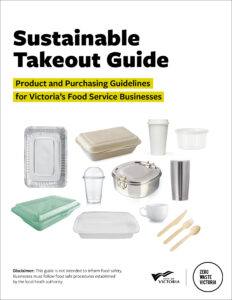The boom in household waste and what our garbage tells us about the COVID economy
Some of Canada’s biggest cities are seeing a surge in household waste thanks to myriad COVID-related trends, including the re-emergence of disposable goods, a summer full of home renovations and the continuous growth of online shopping.
Early figures from the cities of Vancouver, Calgary, Winnipeg, Toronto and Halifax reveal that the amount of residential garbage collected has increased significantly since the start of the pandemic.
Data compiled by CBC Radio’s The Cost of Living shows the garbage picked up in many of these cities went up in some months by as much as 35 per cent compared with the year before.
In Toronto, residential garbage collection was down more than nine per cent when comparing May 2019 to May 2020, but it then jumped by 12 per cent from June 2019 to June 2020.
In Toronto, residential garbage collection was down more than nine per cent when comparing May 2019 to May 2020, but it then jumped by 12 per cent from June 2019 to June 2020.
In Calgary, single-family residential garbage collection rose by double-digit percentages each month from April through July, when comparing those months in 2019 and 2020. The biggest increase was in June 2020, which was up 22 per cent compared with June 2019.
Winnipeg saw high increases as well, with the garbage collected from single-family residences going up 34.5 per cent in June 2019 compared with June 2020. However, some of these year-over-year differences could be due to processing changes, when the City of Winnipeg switched its contractors for pickup services.
Halifax did not provide The Cost of Living with a monthly breakdown, but it recorded an overall residential garbage increase of 11 per cent from March to August 2020.
Commercial waste goes in the other direction
Commercial waste, on the other hand, is down significantly across Canada, suggesting a major shift in where and how we consume goods and services.
“That wouldn’t surprise me very much at all,” said Colin Guldimann, an economist with RBC Economic Research.
“Early on in the pandemic period of late March, early April, spending was down quite significantly — a little over 30 per cent,” he said. “But by the time we hit June, it had almost fully recovered and in fact [was] tracking a bit higher than last year.”
According to RBC’s COVID Consumer Spending Tracker, Canadians are spending more on home improvements, electronics and groceries. All of these categories contribute to the household waste typically collected by municipalities.
“We’ve seen some interesting trends as well in how Canadians are spending on food, which of course is a large part of residential waste. Grocery spending over the whole period since April is up about 20 per cent, and restaurant spending is down quite a lot,” Guldimann said.
Boxed in by Amazon Prime, so to speak
Online marketplaces have emerged as a critical part of consumer habits in the COVID-19 economy, and early data from the City of Toronto suggests consumers are throwing more cardboard boxes into their blue bins as a result.
Cardboard used to make up about 14 per cent of all materials going into the city’s recycling facilities, but its share has jumped to an average of 17.3 per cent so far this year.
In an email to CBC Radio’s The Cost of Living, a City of Toronto spokesperson said the jump “may be a result of the increase in online shopping this spring due to the COVID-19 pandemic.”
Early data from the City of Winnipeg seems to support the same theory. The amount of corrugated boxes Winnipeg collected for recycling has increased by nearly 23 per cent in the first seven months of this year.
Online shopping was already trending upwards before the pandemic lockdowns started across the country, RBC’s Guldimann said. But spending shot up by as much as 70 per cent once brick-and-mortar stores started shutting down.
Waste, as an economic indicator, is garbage right now
Garbage and waste used to be a fairly good indicator of a country’s economy. When times are good, we often waste more and want more. When times are bad, we save and conserve.
But the events of 2020 have been no ordinary economic downturn.
“What’s been surprising to us is how strong consumption has actually remained throughout this period,” Guldimann said.
“And I would attribute a large part of that to the outsized role the federal government has made for itself in supporting household incomes during the economic period.”
However, it could be too early to conclude whether Canadians are actually producing more waste overall, since many cities have yet to fully analyze their data.
While it’s difficult to make meaningful comparisons between residential and commercial waste trends at this point, the drop in commercial waste in cities such as Toronto was clear during the spring lockdowns.
This is just one result of displacing consumption from workplaces, schools and restaurants to the home.
That’s not necessarily a bad thing, said Jo-Anne St. Godard, executive director of the Recycling Council of Ontario, who said that these changes could help reduce waste overall if habits change.
“I think the pandemic really forced us … to think local and buy local.” – Jo-Anne St. Godard, executive director of the Recycling Council of Ontario
“The silver lining to being shut in is that we were forced to think, plan and make meals,” said St. Godard, whose organization is also known as the Circular Innovation Council.
According to St. Godard, there’s also anecdotal evidence that Canadians are buying more local products and therefore reducing waste in packaging and transportation.
“I think the pandemic really forced us, from a markets’ perspective, to think local and buy local. And that actually can deliver very real results for the economy and waste-free markets,” she said.
While single-use goods such as plastic bags and disposable gloves are making a comeback, recycling advocates like St. Godard say they hope it’s only temporary.



